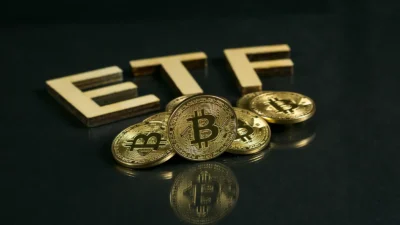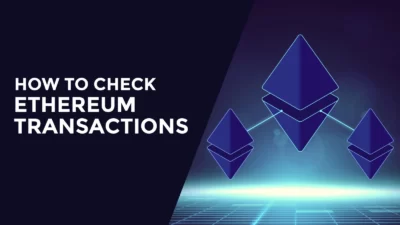Table of Contents
Toggle- Overview of USDT, USDC, and BUSD
- What Is the Difference Between USDT, USDC, and BUSD?
- Advantages and Disadvantages of Using USDT, USDC, and BUSD for Crypto Investing
- Choosing the Right Stablecoin for Your Trading Needs
- Benefits of USDT, USDC, and BUSD
- Security Considerations for Using USDT vs USDC vs BUSD
- Comparing Fees for Using USDT vs USDC vs BUSD
- Conclusion
Learn about the features, benefits, and potential drawbacks between USDT vs USDC vs BUSD to determine which stablecoin is the right fit for your needs. Cryptocurrency investing can feel like a wild ride, from understanding the basics of trading to keeping up with the latest news and developments. As you explore the crypto space, you’ll want to make sure you’re well-informed about different types of digital currencies and how they can fit into your investing strategy.
One area that may be unfamiliar to beginner investors is stablecoins. You might have heard of Tether (USDT), Circle USD Coin (USDC), or Binance USD (BUSD) – all popular stablecoins – but do you understand the differences between them?
In this article, we’ll provide an overview of key features such as project goals and functions, as well as explain what makes each one unique. We’ll also take a look at how these three stablecoins compare to one another and what they might mean for your financial future.
Overview of USDT, USDC, and BUSD
As you explore the world of cryptocurrency, you’ll come across stablecoins. A stablecoin is a type of coin whose value is pegged to a fiat currency, normally the U.S. Dollar. Stablecoins are ideal if you need to reduce volatility in your crypto portfolio but don’t necessarily wish to convert out of crypto altogether.
Specifically, three of the most widely used stablecoins in crypto trading today are USDT, USDC, and BUSD. Here’s a quick overview of each one:
USDT (Tether): This is likely the most popular stablecoin out there and is backed by assets equivalent to the number of coins issued. It’s known as an “Omni-protocol” coin since it runs on multiple blockchains instead of just one.
USDC (Circle USD Coin): USDC is an Ethereum-based token run by Coinbase and Circle in an open-source protocol called CENTER. This coin offers transparency thanks to monthly attestations that certify its USD reserves remain intact.
BUSD (Binance USD): this new offering was released by Binance earlier this year and it’s based on Ethereum’s ERC-20 standard; like USDC, it publishes monthly reports that audit their cash reserves as attributed to each token issued.
What Is the Difference Between USDT, USDC, and BUSD?
Are you curious about the difference between USDT, USDC, and BUSD? Though they may sound similar, they’re quite different. To understand them better, let’s break them down one by one.
USDT: Also known as Tether, USDT is a stablecoin that is pegged to the US Dollar on a 1:1 ratio. It is an ERC-20 token issued on the Ethereum blockchain and backed by USD reserves stored in an audited trust.
USDC: USDC is a regulated stablecoin that has been designed to bring fidelity and transparency to global money markets. It is an ERC-20 token issued on the Ethereum blockchain and backed by physical US Dollars held in FDIC-insured banks.
BUSD: Binance USD (BUSD) is another stablecoin. Like USDC, it is also directly pegged to the US Dollar on a 1:1 ratio and backed by reserves of USD held in the bank accounts of Binance partners Paxos Trust Company and Prime Trust.
Advantages and Disadvantages of Using USDT, USDC, and BUSD for Crypto Investing
Regarding crypto investing, one of the main considerations is which stablecoin you’ll use for transactions. USDT (Tether), USDC (Circle), and BUSD (Binance) are three of the most popular options. Each of them has advantages and disadvantages, so it’s important to know what they are before making a decision on which one is right for you.
Advantages of USDT
Despite its somewhat controversial past, Tether is the most widely used option. It offers low fees, and high liquidity and is available on a wide range of exchanges. There’s also very little volatility with Tether, so that helps to keep your investments secure, that’s why most people like to buy USDT in Dubai.
Advantages of USDC
USDC is backed by real US dollars held in reserve and has seen increased popularity since it was released in 2018. It has lower fees than other stablecoins like Tether and is available on more exchanges as well. The main advantage for investors wanting to use USDC for crypto investments is that it tends to have higher liquidity than some other options, meaning transactions can be completed much faster.
Advantages of BUSD
Binance launched its stablecoin in 2019 called BUSD, which provides yet another option for those looking to invest in crypto assets. It has lower transaction fees than most other stablecoins on the market, as well as increased transparency since an independent third-party auditor manages it. Plus, Binance allows users to convert their assets back into cash with no minimum limit or processing fee—which can be a huge benefit if you’re an investor looking to move large amounts quickly without incurring high costs.
Choosing the Right Stablecoin for Your Trading Needs
What’s the right choice of stablecoin to trade with? When it comes to USDT, USDC, and BUSD, it depends on the type of trading you want to do.
USDT
If you’re looking for a stablecoin that isn’t affected by crypto market volatility and is easy to use with multiple crypto wallets, USDT is the way to go. It’s one of the most popular stablecoins out there and offers fast transaction speeds and low transaction fees. Plus, you can use it to trade in multiple major exchanges.
USDC
USDC is slightly different from other stablecoins because it’s backed by fiat currency. This makes it great for those who want true stability when trading in the cryptocurrency market, but be aware that there are usually higher fees involved than with other stablecoins like USDT or BUSD.
BUSD
BUSD offers a great option for those who don’t have access to traditional financial services. This stablecoin is also backed by real-world currency, and its low transaction fees make it attractive for traders who plan on making lots of transactions. Plus, its quick transaction speeds are perfect for day traders looking to take advantage of any fluctuations in the crypto markets.
Benefits of USDT, USDC, and BUSD
Cryptocurrencies have become a popular alternative to traditional banking systems. They offer several advantages, including quick transactions, low fees, and increased transparency. However, the volatility of cryptocurrencies can be a drawback for some investors. Stablecoins such as USDT, USDC, and BUSD offer a solution to this issue. In this blog post, we will discuss the benefits of using these stablecoins.
Quick Transactions
One of the primary benefits of using stablecoins is their quick transaction times. Traditional bank transfers can take several days to complete, whereas stablecoins can be sent and received instantly. This is because stablecoins are based on blockchain technology, which allows for peer-to-peer transactions without intermediaries.
Availability
Another advantage of stablecoins is their availability. Traditional banks may not offer services to certain countries or regions, while stablecoins can be used globally. Additionally, transaction fees are often lower than those of traditional banking systems. This makes stablecoins an attractive option for people who need to send money internationally or who want to avoid high fees.
Stability
As their name suggests, stablecoins are designed to be stable. Unlike other cryptocurrencies, which can be highly volatile, stablecoins are pegged to the value of a fiat currency, such as the US dollar. This means that stablecoins are not subject to the same price fluctuations as other cryptocurrencies. This stability makes stablecoins an attractive option for people who want to invest in cryptocurrencies but are wary of the risks associated with high volatility.
Transparency
Stablecoins are often backed by a reserve of the currency they are pegged to, such as the US dollar. This reserve is held by a third-party custodian and is audited regularly to ensure that it matches the number of stablecoins in circulation. This transparency provides users with confidence that the stablecoins they hold are backed by a tangible asset.
Safety
Stablecoins are also considered to be a safer option than other cryptocurrencies. This is because they are backed by a fiat currency and are less susceptible to market fluctuations. Additionally, stablecoins are often subject to the same regulatory oversight as traditional banking systems. This means that stablecoins are subject to anti-money laundering (AML) and know-your-customer (KYC) regulations, which can help prevent fraudulent activity.
Security Considerations for Using USDT vs USDC vs BUSD
When it comes to security considerations, USDT, USDC, and BUSD are comparable in terms of safety—each offers a certain level of protection.
For example:
- USDT is an ERC-20 token held in users’ wallets and backed by an equivalent reserve of its issuer’s currency. It is thought to be secure because of the reputation of the issuer and their ability to redeem tokens for the underlying asset.
- USDC is also an ERC-20 token held in users’ wallets and backed by an equivalent reserve of its issuer’s currency. It has been audited by CoinDesk, a leading digital currency news outlet, and found to be backed 100% by real U.S. dollars stored in FDIC-insured accounts
- BUSD is a stablecoin that has been audited by Ernst & Young and is fully backed 1:1 with US dollars held in physically segregated accounts at U.S.-based FDIC member banks.
Ultimately, which coin you decide to use depends on your risk tolerance—all three offer a different level of security based on the issuer’s reputation and the regulations they adhere to. So it’s important to do your research before investing in any coin and make sure you know who’s behind it and how they protect your funds.
Comparing Fees for Using USDT vs USDC vs BUSD
When it comes to fees, USDT, USDC, and BUSD all have their costs associated with them. Let’s take a look and see how they stack up!
USDT
USDT is the most widely used digital stablecoin and can be used for trading, investments, remittances, payments, etc. People buy and sell USDT in Dubai because of its lower transaction fees and faster transactions compared to other cryptocurrencies. However, it also has higher withdrawal fees than USDC or BUSD.
USDC
USDC is a blockchain-based digital asset that is pegged 1:1 to the US Dollar and backed by crypto custodian Coinbase. It has zero transaction fees when using Coinbase wallets, which makes it a great choice if you are looking to avoid high fees. However, there are still some network fees when transacting outside of Coinbase wallets that you should be aware of.
BUSD
BUSD is a regulated stablecoin issued by Paxos Trust Company in partnership with Binance. It currently has one of the lowest network and transaction fees on the market so if you are looking for cost savings on your transfers then BUSD might be your best bet! The only downside is that it may not be available in all jurisdictions yet.
Conclusion
To sum up, all three USD-pegged stablecoins have their strengths and weaknesses. While USDC is backed by the US dollar and is trusted by many major exchanges, USDT offers some clear advantages over the other two stablecoins. BUSD is a recent entrant to the market and is slowly becoming a more popular choice for crypto investors.
Whichever stablecoin you decide to go with, it’s important to understand the advantages and disadvantages of each of them to make sure that your investments are as safe and secure as possible. Ultimately, your own investment goals and risk appetite will determine which stablecoin you choose.








